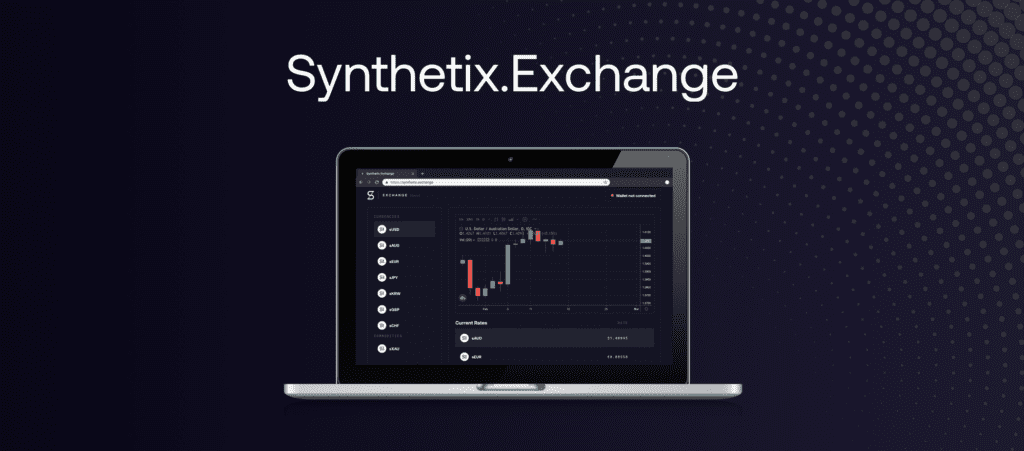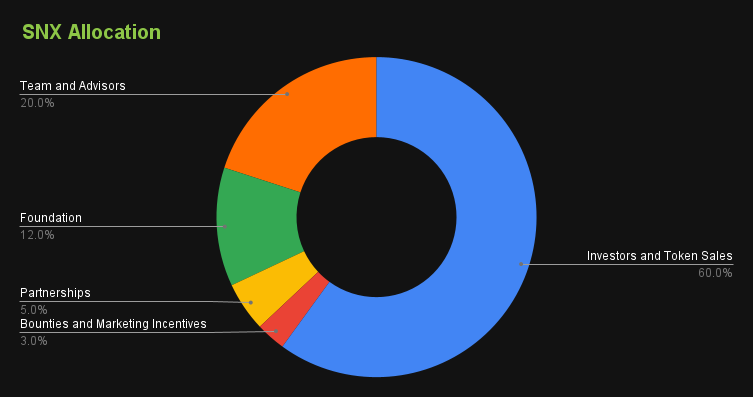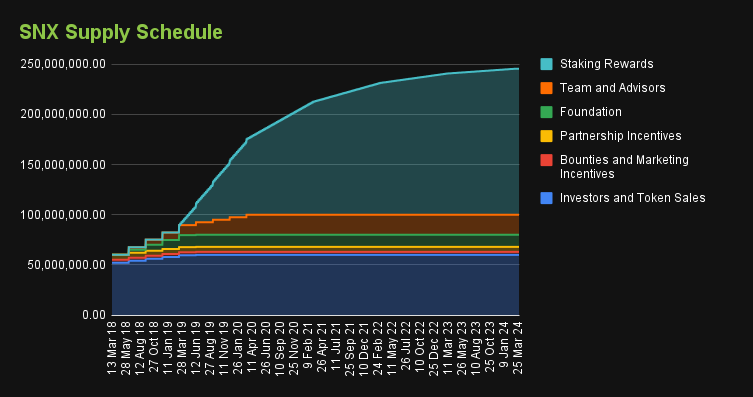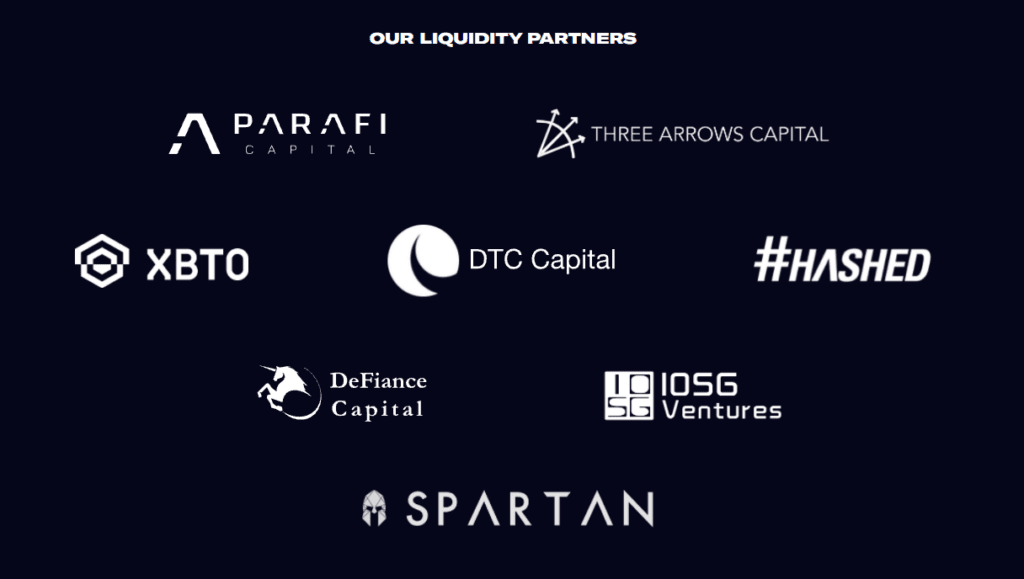The on-chain perpetual contract market is massive, and competition is heating up. In addition to leaders such as dYdX and GMX, the trading volume of Synthetix’s (SNX) perpetual contract has lately climbed dramatically, and Synthetix V3 is also being introduced, repositioning SNX as a capital favorite. Let’s learn details about this project with Coincu through this Synthetix Review article.

Synthetix is a hot DeFi project based on the Ethereum blockchain technology that has the stability of Optimism. SNX immediately gained community attention and established itself as one of the market’s pioneering DeFi initiatives.
What is Synthetix?
Synthetix is a native value ecosystem divided into tokens on the Ethereum network. Tokens may represent any underlying asset, including virtual currencies, commodities, equities, and financial indexes.
Users will, however, possess Synth tokens issued on the Synthetix network rather than these assets directly. These tokens are backed by a user’s collateral and may be exchanged or used as leverage to engage in other market activities.
The asset exchange concept of Synthetix enables customers to convert Synths directly via smart contracts without third-party involvement.
The project, an essential partner of Optimism, was deployed on Optimism as early as July 2021. Since then, Synthetix has urged everyone to move their committed SNX to Optimism, and transactions and revenue from the Ethereum mainnet have been steadily transferred to Optimism.
Synthetix’s primary source of revenue is now claimed to be perpetual contract trading on Optimism.
The Synthetix protocol was designed by Kain Warwick. It was originally known as the Havven protocol. According to estimates, this stablecoin collected up to $30 million in 2018 via the protocol’s ICO and sales of the SNX token.
Kain Warwick is a Sydney, Australia native and the creator of Blueshyft. Warwick controls Australia’s biggest crypto payment gateway, which serves over 1250 establishments. On the 29th of October 2020, he finally chose to give up his position in Synthetix to decentralized governance.
Warwick said in the early months of 2021 that Synthetix investors would be able to purchase shares in US stock giants such as Tesla and Apple. At the time of writing, the Synthetix platform had nearly $1.5 billion invested in it.
Synthetix assets, known as Synths, are valued in relation to real-world assets. Price oracles are instruments used in this procedure.
To construct new Synths, users must first purchase SNX tokens and store them in their wallets. As previously indicated, the synth values are similar to real-world asset values. This is something to keep in mind while participating in a Synthetix transaction. Now, the Synthetix Review article will learn about how the exchange works.
How does it work?
Synthetix employs a multi-token architecture built on collateral, staking, inflation, and fee mechanism.
The system makes use of two sorts of tokens: the Synthetix network token (SNX) and synthetic assets, or Synths. This is the foundation of the decentralized synthetic asset issuance protocol, which is similar to MakerDAO, which enables ETH and other cryptocurrencies to be used as collateral to produce DAI (MakerDAO decentralized stablecoins).
SNX is locked in Synthetix to create sUSD (synthetic USD). sUSD serves as a liability, while SNX serves as collateral. The primary distinction between Synthetix and MakerDAO is that SNX is collateralized for the capacity to manufacture any synthetic asset, whereas MakerDAO is not (not just sUSD).
Although Synthetix is a complicated protocol with several techniques for staking, minting, burning, pegging, and governance. According to SNX holders and Synthetix users, the protocol’s fundamentals are straightforward and can be broken down into three parts:
- SNX Key as collateral: To stake the system, SNX holders lock their SNX as collateral.
- Mint Synth: Synths are offered based on the value of locked SNXs, and may be used for a number of reasons, such as trade and remittances.
- All Synth transactions on Synthetix are rewarded for holding SNX. Exchange fees are provided to SNX holders as an incentive for staking into the system.
To get the correct pricing for each asset represented by Synthetix, the project depends on decentralized oracles. Oracles are protocols that provide the blockchain with real-time pricing information. They bridge the asset price gap between the blockchain and the outside world.
The oracles on Synthetix allow users to retain and even swap Synths. A crypto investor may now access and trade previously inaccessible assets like silver and gold through Synths.
To utilize the underlying assets, you do not need to own them. This is not the case with other tokenized commodities.
Another important feature of how Synthetix works is that Synths may be deposited on Uniswap, Curve, and other DeFi initiatives. The reason for this is that the project is built on Ethereum. As a result, placing Synths in the liquidity pools of other protocols allows you to earn income.
The transaction fees that customers pay to utilize Synthetix produce SNX for the system. As a result, the number of persons that use the protocol affects the number of fees that are generated. Thus, the higher the costs, the greater the profits for traders.
Features
The aim of Synthetix is to empower customers to maximize their money via the issuing of Synths. Allowing trading of these Synths on our DEX platform will also provide liquidity for them.
Synths are defined as synthetic assets in the Synthetix ecosystem. Users may think of it as a token whose value is supported by the SNX token and whose price is comparable to the price of the coin to which it is linked. It is a one-of-a-kind and intriguing DeFi project with the following important characteristics and takeaways:
Synthetix was based on the Ethereum blockchain and provided users with access to a wide range of highly liquid synthetic assets, or synths. Synths monitor and give returns on the underlying asset to users without requiring the user to own the item directly.
The project’s goal is to widen the crypto sector by introducing non-blockchain assets. In doing so, it will provide customers access to a healthy financial market. The platform is both a decentralized exchange (DEX) and a synthetic asset platform.

To handle transactions, the platform also employs a decentralized order book mechanism. This contributes to the fairness and transparency of network transactions.
Several additional features have been added to Synthetix in the past, such as support for transactions over many networks and the integration of a risk assessment system to assist users in making investment choices.
Synthetix was created in a novel approach to expose users to underlying assets using synthesizers without requiring the user to retain the underlying item. Users may trade anonymously on the site, and there is also a staking pool where holders of the native token, SNX, can stake their tokens in exchange for incentives. These incentives are a part of the exchange’s transaction costs.
Synthetix monitors the underlying assets using smart contract price delivery mechanisms known as “oracles.” Its smart contracts are apps that run automatically when certain circumstances are satisfied.
The platform enables its customers to trade synthesizers on the exchange without worrying about slippage or liquidity. The exchange was interested in the requirement for third-party facilitators due to the unique nature of Synthetix. SNX tokens are also utilized as collateral for the exchange’s generated synthetic assets. This implies that when consumers get synthesizers, SNX tokens are locked in the smart contract.
It has switched to the Optimistic Ethereum mainnet to cut gas prices and oracle delay.
The makers of Synthetix have embedded inflation into the exchange, which means that the total number of SNX tokens issued will rise from 100 million to 250 million by 2025. Inflation was introduced later as it became clear that exchange costs alone were not sufficient incentive to issue Money.
Synthetix must maintain a steady peg in order for the system to stay stable, guarantee sufficient liquidity, and operate properly. It uses three techniques to preserve the Synth peg: Arbitrage, a sETH Liquidity Pool on Uniswap, and an SNX Arbitrage Contract.
SNX token
The utility token of the ecosystem, SNX, is required to construct synthetic assets known as Synths. Users may buy SNX tokens from a variety of cryptocurrency exchanges and deposit them into a suitable wallet for staking.
While SNX cannot be mined, it may be staked. Staking begins with the user having SNX tokens in a wallet that is compatible with ERC20 tokens. Users must link this wallet to the Synthetic Exchange, and if they want to stake their tokens or mint Synth, they must first lock SNX in the wallet as collateral.
The collateral requirement is 750%, guaranteeing that any Synth created is proportional to the demand as well as the amount of SNX in the wallet. Once Synth has been coined, anybody may access it and use it to trade, invest, pay transactions, or do anything else.
Individuals that build Synth are termed stakers in the system, and their efforts are rewarded with staking incentives. The quantity of SNX locked and the fees collected by the Synthetix exchange determine these incentives.
The more often the Synthetix exchange is utilized, the higher the overall fees produced and hence the bigger the reward pool for individuals that bet.
Key Metrics
- Token Name: Synthetix
- Ticker: SNX
- Blockchain: Ethereum
- Token type: Utility
- Token Standard: ERC-20
- Contract: 0xC011A72400E58ecD99Ee497CF89E3775d4bd732F
- Total supply: 315,996,212 SNX
- Circulating Supply: 253,699,255 SNX
Token Allocation
- Team & Advisors: 20%
- Foundation: 12%
- Partnerships: 5%
- Bounties and Marketing Incentives: 3%
- Investors & Token Sales: 60%

Release Schedule

Use Case
- SNX used to stake and receive reward is SNX token.
- Used to lock as collateral to release Synth to the market.
- Pay trading fees on Synthetix DEX.
Core team
Kain Warwick is the creator of Synthetix Protocol, and he previously worked as a co-founder at blueshyft and as an Advisory Council Member at Blockchain Australia.
Justin Moses, the CTO of Synthetix, has worked with the company from its beginnings. He was the Technical Director of MongoDB before joining Synthetix. He has vast expertise designing and implementing large-scale systems.
Clinton Ennis, the project’s principal architect, has 18 years of expertise in software engineering. He formerly worked at JPMorgan Bank as the Principal Architect.

Investors and partners
Investors
Six significant investors have contributed substantial cash to the trading platform. Just one of the investors is financed via Initial Coin Offerings (ICOs) (ICO). The remainder took part in various rounds. Framework Ventures, Paradigm, IOSG Ventures, Coinbase Ventures, Infinite Capital, and SOSV are among the investors.
Partners

Conclusion of Synthetix Review
Synthetix is a possible project that aims to develop a synthetic asset system on the Ethereum platform. It offers a decentralized and risk-diversified digital asset system by using blockchain technology, making it simpler for users to access conventional assets. The project provides investors with a synthetic asset that can be readily exchanged in a decentralized manner without the need for any third parties.
The next crypto bull run might be on the horizon, and Ethereum DeFi startups like Synthetix could benefit from it.
SNX is essential to the system’s functionality and provides revenues to users through staking and farming procedures. This could turn out to be an attractive option for investors looking for long-term investment opportunities in the crypto market. Hopefully the Synthetix Review article has helped you understand more about the project.
DISCLAIMER: The Information on this website is provided as general market commentary and does not constitute investment advice. We encourage you to do your own research before investing.
Join us to keep track of news: https://linktr.ee/coincu
Harold
Coincu News














